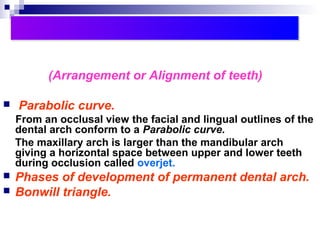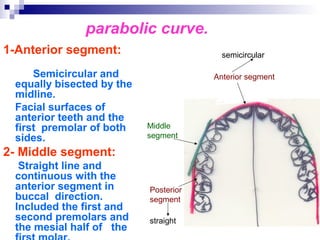The document discusses various aspects of occlusion including:
1. The dental arch curves in three segments - anterior, middle, and posterior.
2. Individual tooth axes are curved to compensate for dental arch curves.
3. Occlusal relationships between upper and lower teeth in centric occlusion involve specific cusp-fossa and cusp-ridge contacts on working and balancing sides.
4. Mandibular movements including protrusion, retrusion, and lateral excursions are described.
































